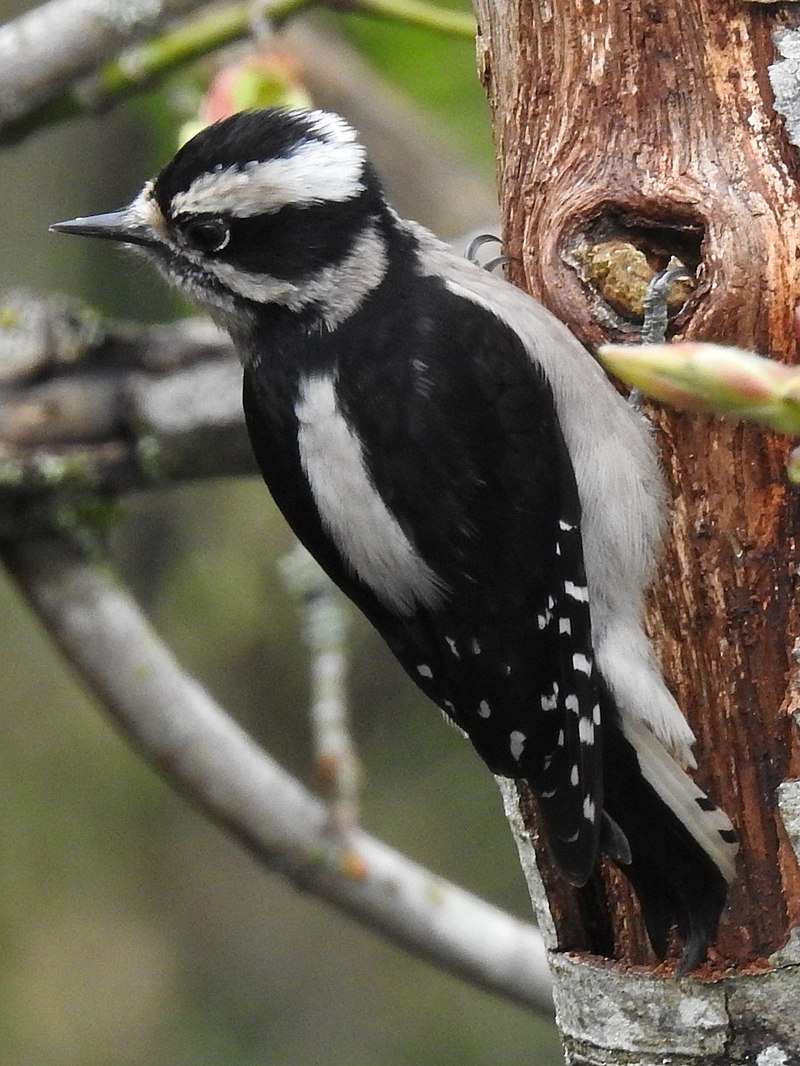
Bird Science - Downy Woodpecker
Share
1. Species Overview
The Downy Woodpecker (Dryobates pubescens) is the smallest woodpecker in North America, typically measuring 6–7 inches (14–18 cm) in length and weighing 20–33 grams. Renowned for its adaptability, it thrives in diverse habitats—from dense forests to suburban backyards—across the United States, Canada, and Alaska. It is the official state bird of Illinois and a frequent visitor to bird feeders, where it consumes suet and seeds.

Male

Female
2. Physical Identification
-
Plumage: Exhibits striking black-and-white patterns: a black back with a distinctive white stripe down the midline, checkered wings, and white underparts. Males feature a small bright red patch on the nape, absent in females.
-
Size Comparisons: Often confused with the larger Hairy Woodpecker, but key differences include:
-
Bill length: Short and dainty (about one-third the head length) versus the Hairy’s long, chisel-like bill.
-
Tail feathers: Outer tail feathers barred with black (versus pure white in most Hairy populations).
-
-
Adaptations: Stiff tail feathers brace against tree trunks while foraging, and a barbed tongue extracts insects from crevices.

3. Distribution & Habitat
-
Range: Year-round resident across most of North America, excluding only the arid southwestern deserts. Northern populations may migrate southward in harsh winters.
-
Habitat Preferences:
-
Natural settings: Deciduous woodlands (especially willow, birch, maple), forest edges, and stream corridors.
-
Human-adapted spaces: Parks, orchards, and residential areas with mature trees or deadwood.
-
Elevation tolerance: Up to 6,500 feet (2,000 m) in mountainous regions.

-
4. Behavior & Ecology
Foraging & Diet:
-
Primary diet: Insects (75%), including wood-boring beetles, ants, and caterpillars; supplements with berries, grains, and suet in winter.
-
Techniques: Agilely hops along branches, pecking bark or drilling cavities. Frequently hangs upside-down to access prey.
Breeding & Nesting:
-
Pair formation: Monogamous bonds form in late winter. Both sexes excavate nest cavities (5–60 ft high) in dead trees, taking 1–3 weeks to complete.
-
Reproduction: Lays 4–8 white eggs per clutch; incubated for 12 days. Fledglings leave the nest after 18–21 days but remain dependent on parents for weeks.
Vocalizations & Communication:
-
Sharp "pik" calls and a descending whinny for territory disputes.
-
Rapid drumming (15–20 beats/second) to signal presence or attract mates.

5. Conservation Status
-
Population: Estimated 14 million individuals; classified as Least Concern due to stable trends.
-
Threats:
-
Habitat loss: Removal of dead trees reduces nesting sites.
-
Anthropogenic hazards: Window collisions in urban areas; predation by cats, hawks, and squirrels.
-
-
Resilience: Thrives in human-altered landscapes; benefits from nest boxes and backyard feeders.

6. Ecological & Cultural Significance
-
Ecosystem role: Suppresses pest insects (e.g., emerald ash borers), aiding forest health. Acts as an indicator species for woodland vitality.
-
Human interaction:
-
Backyard attraction: Easily lured with black-oil sunflower seeds, suet, and water features.
-
Cultural symbols: Represents perseverance in folklore; celebrated in birdwatching communities for its tameness.
-

7. Distinguishing Downy vs. Hairy Woodpeckers
| Feature | Downy Woodpecker | Hairy Woodpecker |
|---|---|---|
| Size | Sparrow-sized (6–7") | Robin-sized (9–10") |
| Bill | Short, delicate | Long, robust |
| Tail Markings | Black bars on outer feathers | Pure white outer feathers |
| Call | Softer "pik"; descending whinny | Sharper, louder "peek!" |
Key Adaptation: Winter Survival
Unlike migratory birds, Downy Woodpeckers remain year-round in their territories. They endure cold months by foraging dormant insects deep within tree bark and leveraging high-fat foods from feeders. Their dense plumage provides insulation against freezing temperatures.
